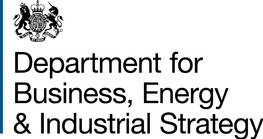Definition of Terms Used Within the DDC Pages
Glossary F-G
Glossary of acronyms and specialised terms on the IPCC-DDC website.
The definitions shown here are from the IPCC Fifth Assessment Report (AR5) working group glossaries: WGI, WGII and WGIII. The source working group is indicated on each definition.
A | B | C | D | E | F-G | H-I | J-K | L-M | N-O | P-Q | R | S | T | U-V | W-Z
FAO
Food and Agriculture Organisation (UN)
FAR
Fossil Fuels
Carbon-based fuels from fossil hydrocarbon deposits, including coal, peat, oil, and natural gas. WG III
GCM
General Circulation Model. See Climate Model
GCM
Global Climate Model. See Climate Model
GDP
Gross Domestic Product
GEOTIFF
Geostationary Earth Orbit Tagged Image File Format. More about GeoTIFF
GHCN-ERSST
Global Historical Climatology Network - Extended Reconstructed Sea Surface Temperature. ERSST link, GHCN link.
GIS
Geographical Information System. GIS is designed to capture, store, manipulate, analyze, manage and present geographical data.
Global Mean Surface Temperature
An estimate of the global mean surface air temperature. However, for changes over time, only anomalies, as departures from a climatology, are used, most commonly based on the area-weighted global average of the sea surface temperature anomaly and land surface air temperature anomaly. WGIII
Greenhouse Gas (GHG)
Greenhouse gases are those gaseous constituents of the atmosphere, both natural and anthropogenic, that absorb and emit radiation at specific wavelengths within the spectrum of thermal infrared radiation emitted by the Earth's surface, the atmosphere itself, and by clouds. This property causes the greenhouse effect. Water vapour (H2O), carbon dioxide (CO2), nitrous oxide (N2O), methane (CH4) and ozone (O3) are the primary greenhouse gases in the Earth's atmosphere. Moreover, there are a number of entirely human-made greenhouse gases in the atmosphere, such as the halocarbons and other chlorine- and bromine-containing substances, dealt with under the Montreal Protocol. Beside CO2, N2O and CH4, the Kyoto Protocol deals with the greenhouse gases sulphur hexafluoride (SF6), hydrofluorocarbons (HFCs) and perfluorocarbons (PFCs). WGIII
GRIB
GRIdded Binary. GRIB is a mathematically concise data format commonly used in meteorology to store historical and forecast weather data.
GZIP
GNU zip. GZIP is used for file compression and decompression.
 "
"




